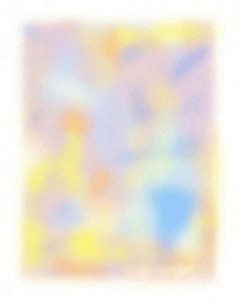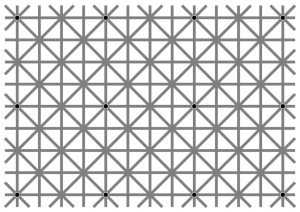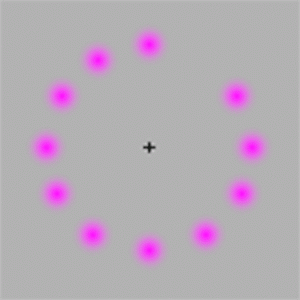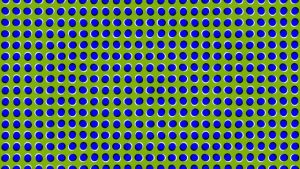Not so fast! We have all been the victim of our own misperceptions from time to time, but what if our eyes and our brains communicate in ways that we aren’t conscious of?
Did you know that you have a blind spot in the middle of your peripheral vision? A section of your view which is completely distorted, but your brain fills in the blank for you so you aren’t always seeing a void in your side view.
Conversely, you can always see your nose, your eyes simply have an agreement with your brain to ignore it.
There are thousands of functions you perform subconsciously every day. Awareness of them would exhaust you!
But are there other ways your systems are tricking you? We took a look at some visual phenomena to find a scientific reason, explanation, or simply a name for these optic illusions.
The Illusion is in the Eye of the Beholder
There are three basic types of optical illusions:
- Physiological, which describe the effects of excessive stimulation on the eyes, from brightness and movement, to dimension and color
- Literal, which creates the sense that the image you are looking at is different than the elements, angles, or colors that create them
- And Cognitive, where the eye and the brain make unconscious inferences about perceived objects.
Let’s start with an easy one. You’ve seen this image before:
Hybrid Images
 From a normal distance, you clearly see Albert Einstein. Taking a few steps away or tilting your screen back however, will reveal Marilyn Monroe hiding in the image of the scruffy genius. This hybrid photo, one superimposed upon the other, is often advertised as an easy eye exam. If you struggle to see one or the other image, it may be time to adjust your prescription, but the MIT team who developed this illusion under the tutelage of Visual Intelligence pioneer Aude Oliva, doesn’t use it to test eye sight. They use it to study visual perception and recognition.
From a normal distance, you clearly see Albert Einstein. Taking a few steps away or tilting your screen back however, will reveal Marilyn Monroe hiding in the image of the scruffy genius. This hybrid photo, one superimposed upon the other, is often advertised as an easy eye exam. If you struggle to see one or the other image, it may be time to adjust your prescription, but the MIT team who developed this illusion under the tutelage of Visual Intelligence pioneer Aude Oliva, doesn’t use it to test eye sight. They use it to study visual perception and recognition.
Oliva has created several of these hybrid images and has used them to help determine the way we take in a scene. In this example, our eyes take in the picture as a whole, accepting the most basic information it can, and allowing our brain to make up the difference.
When given only a few seconds to gaze at the image, our brains won’t detect Marilyn, as our eyes have only processed the most basic of information available. As we give ourselves more time to read the image, the finer details become clearer and we are able to discern her open-mouthed smile emerging from what we once perceived as a genius’s facial hair. His sleepy eyes fade into her dreamy gaze.
If, however, you are in the wrong prescription, those finer details may never become clear to you.
While this claim isn’t entirely unfounded, we do not suggest you rely on a simple image to determine your prescription.
Let’s have another, shall we?
Troxier’s Image
 No, you don’t need to adjust your screen resolution, this is a Troxler’s image. Fuzzy and ill-defined, what happens when you fix your gaze on the center? Go ahead, we’ll wait.
No, you don’t need to adjust your screen resolution, this is a Troxler’s image. Fuzzy and ill-defined, what happens when you fix your gaze on the center? Go ahead, we’ll wait.
How long did you look?
And where did it go?
And the moment you unfixed your gaze, did it return?
Discovered by Ignaz Paul Vital Troxler in 1804, the Troxler Effect demonstrates that rigid fixation on a focal point will reduce your ability to register the nearby stimuli. This illustrates the importance of saccades, the involuntary and usually imperceptible movement of your eye as it works to continually assess and intake information.
Scintillating Grid Illusion
 The above image is an example of a Scintillating Grid Illusion. There are 12 black dots at intersecting points in the grid, but no matter how hard you try you won’t be able to register them all at once. This is due to a phenomenon called Lateral Inhibition. This is similar to tunnel vision, in that when your brain locates the dot within the grid, it reduces the contrast and focus on the rest of the image, increasing its awareness of the focal point.
The above image is an example of a Scintillating Grid Illusion. There are 12 black dots at intersecting points in the grid, but no matter how hard you try you won’t be able to register them all at once. This is due to a phenomenon called Lateral Inhibition. This is similar to tunnel vision, in that when your brain locates the dot within the grid, it reduces the contrast and focus on the rest of the image, increasing its awareness of the focal point.
Basically, your brain wants to process one dot properly, at the expense of seeing the rest of the images details.
Green Shadow
 This image is actually two illusions. An overstimulation of your rods and cones forces your brain to perceive colors as their primary pairing. In this case, your brain is interpreting magenta as lime green. Combine that with Troxler’s effect, or Troxler’s fading. This is another instance where your brain deletes information it feels you don’t need.
This image is actually two illusions. An overstimulation of your rods and cones forces your brain to perceive colors as their primary pairing. In this case, your brain is interpreting magenta as lime green. Combine that with Troxler’s effect, or Troxler’s fading. This is another instance where your brain deletes information it feels you don’t need.
This leads to two separate illusions. When you focus on the center point, do the dots disappear? Second, would you believe me if I told you there is are no green dots in the photo above? It’s a figment of your imagination.
Visual Echo
 This highly contrasted image is a still, not a Gif. The dots appear to be moving, but this is really an after image. The miniscule eye movements cause a trailing image, almost a visual echo, which cause the dots to appear to move. If you practice a fixed gaze, the same gaze that caused the illusion in the Troxler image, you can settle the dots and make them still.
This highly contrasted image is a still, not a Gif. The dots appear to be moving, but this is really an after image. The miniscule eye movements cause a trailing image, almost a visual echo, which cause the dots to appear to move. If you practice a fixed gaze, the same gaze that caused the illusion in the Troxler image, you can settle the dots and make them still.
Thank you for taking this fun peek into the mind’s eye with ilumin! Together we got to explore how, thanks to some intricate communications, and even some subconscious conspiring among your own faculties, sometimes, you just can’t believe your eyes!








